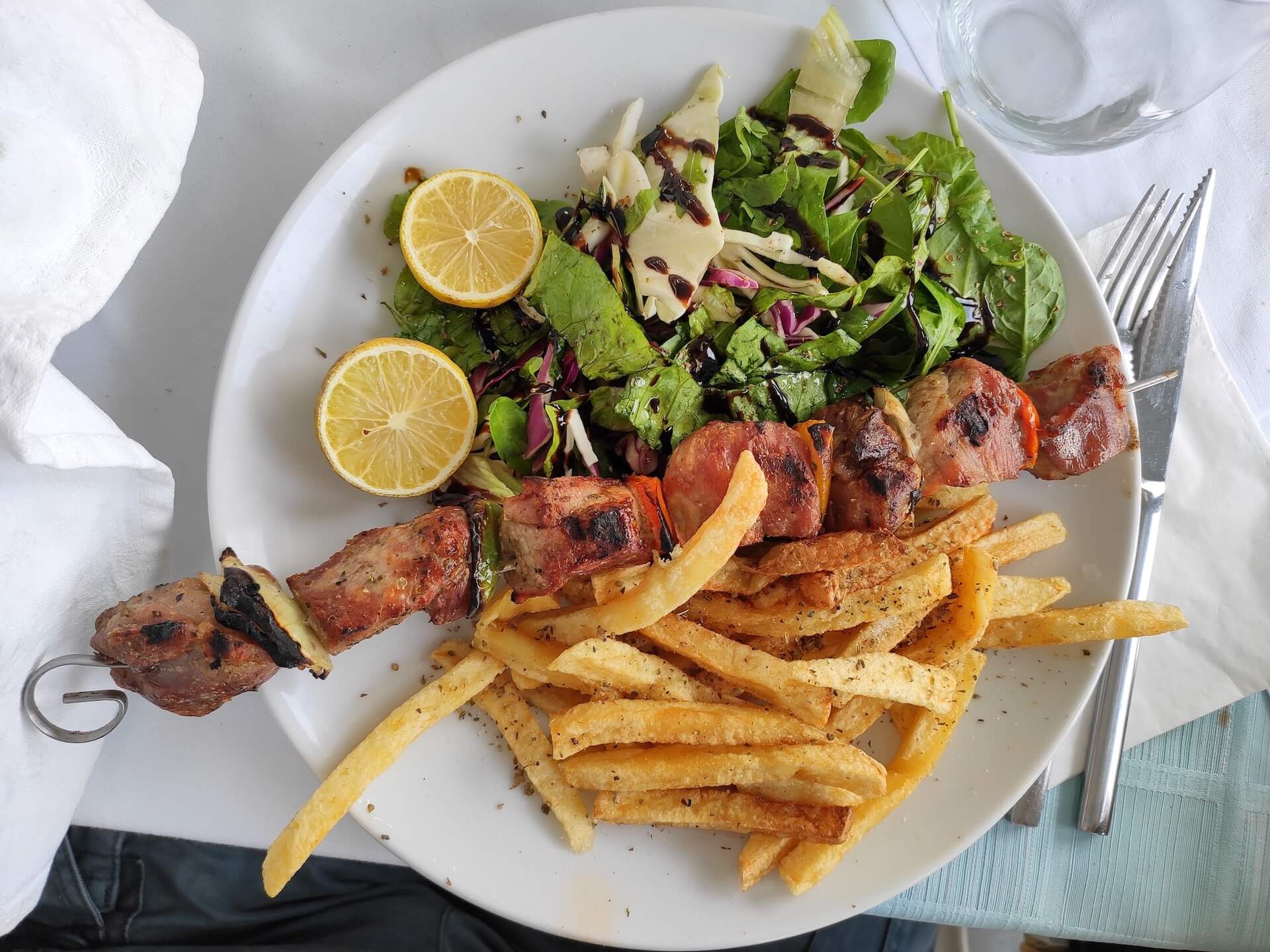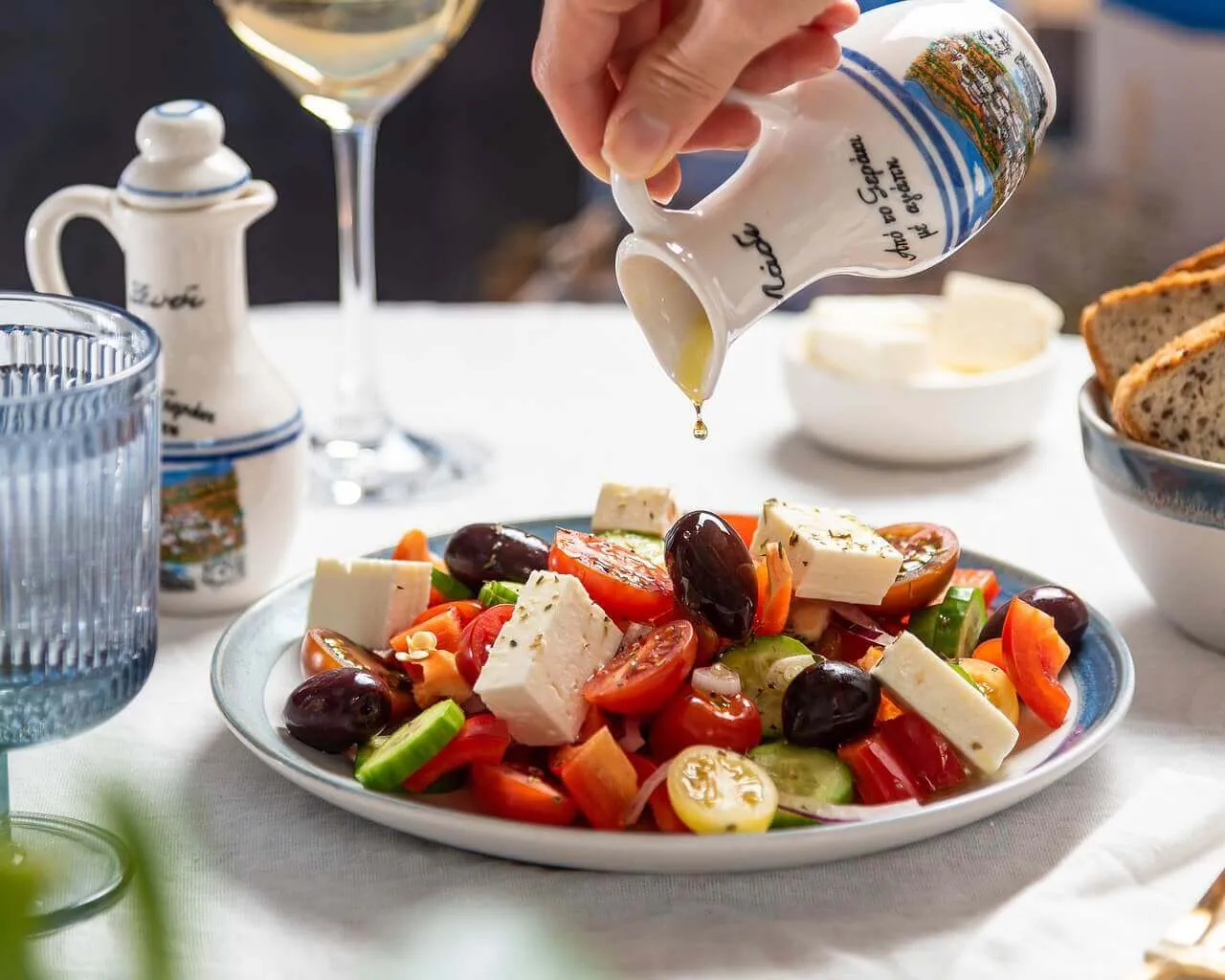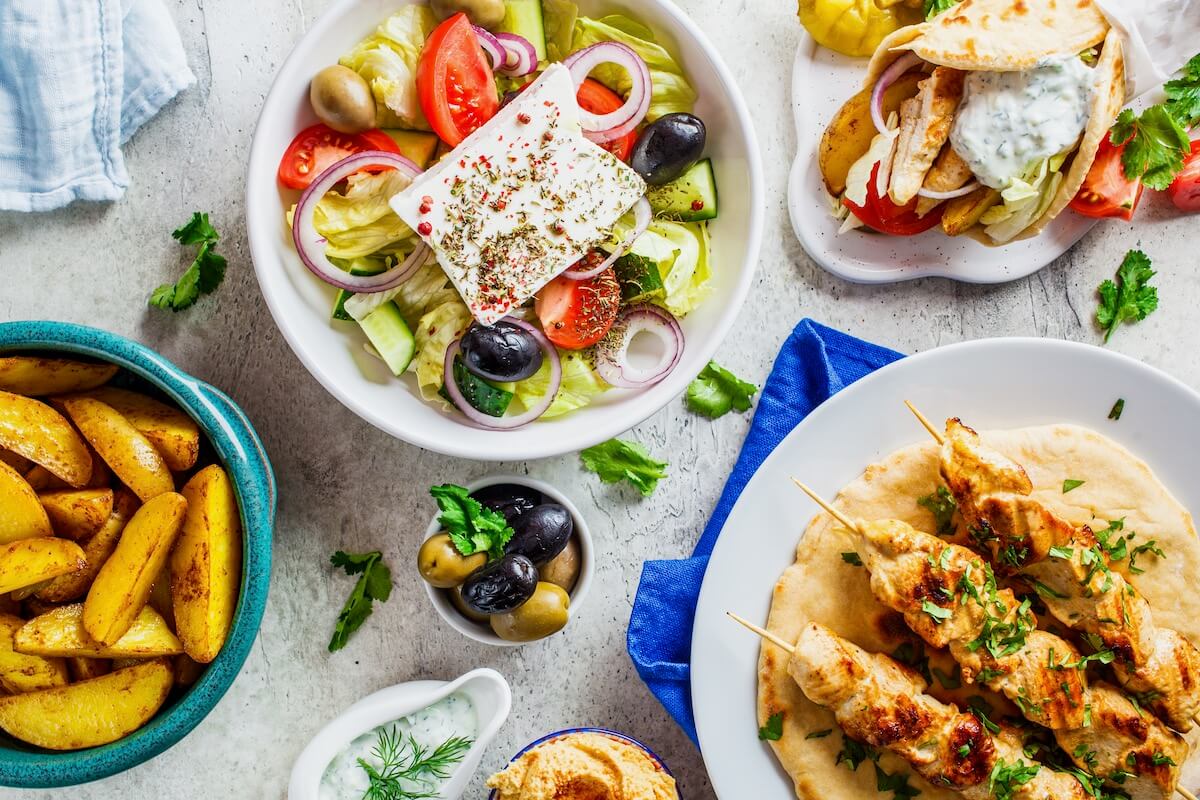Traditional Greek cuisine isn’t about the number of ingredients you have but how you use them. The 4,000-year-old culinary tradition, paired with borrowed recipes from Turkish and Italian influences, has made modern Greek cuisine a representative of the Mediterranean diet. Here are its key features.
The Most Common Ingredients in Traditional Greek Cuisine
Whether you visit an authentic taverna in Athens or some of the best international restaurants in Mykonos, the Greek influence will be present in every meal. Booking a table at any restaurant here inevitably leads visitors to discover its culinary traditions.
When you open a menu, you’ll likely see the following ingredients in most dishes:
- Olive oil,
- Olives,
- Feta (or any other white cheese),
- Herbs like thyme, oregano, and mint,
- Fish and seafood,
- Local honey,
- Fruits and vegetables like melons, tomatoes, cucumbers, onions, oranges, and lemons,
- Yogurt,
- Legumes like chickpeas, lentils, and beans.
Ancient Greek Cuisine Influenced the Food of Greece Today
Ancient Greeks survived on bread, wine, and olive oil. They ate olives and nuts drizzled with honey for dessert and bread dipped into wine for breakfast. All the ingredients were locally sourced and always fresh, which is apparent in today’s cuisine.
When you see lamb skewers, tzatziki, and baklava on the menu, you might think you’re in Turkey, and all those olives might remind you of Italy. While both these nations have their versions of these recipes, over time, their influences spread across Europe, and similar food and ingredients were used.
The overlap between Greek, Italian, and Turkish dishes is apparent in the three nations’ cuisines. You can eat tzatziki and baklava anywhere and enjoy the flavors equally.

Kebab, souvlaki, or gyro? Some may argue they’re the same, but their flavors are distinc
Cheese – A Greek’s Best Friend
One of Greece’s staple ingredients is cheese, often produced by family businesses. Numerous dishes include feta, a white, salty dairy product that melts in the mouth.
Feta is made of sheep’s milk, but not in every region of the country. Specific areas have recipes for cheeses that differ from everything else, and the type of milk and proving methods determine their flavor and consistency.
If you plan to eat at vegan restaurants on Mykonos, you might have to look hard to find one that doesn’t serve dairy in some form. You can always hire a private chef for that purpose with our concierge services.
There Are Many Varieties of Greek Cheeses
Besides feta, you’ll hear about many other cheeses around Greece. For example, kopanisti is a typical Mykonian food served in traditional restaurants, and graviera is a famous Cretan cheese, the second most popular in the country.
Other cheeses you can try here are:
- Kefalotyri – the oldest of the hard cheeses made in Greece, with a salty and spicy taste,
- Anthotyro – a sort made from sheep or goat milk, filled with wild herbs, and ideal for combining with fruits and pasta,
- Mizithra – the most popular of the whey cheeses in Greece, similar to anthotyro and often considered identical to Mykonian kopanisti,
- Ksinotiri – another of the Mykonian cheeses used for meze and garnishing salads,
- Tyrovolia – this is a soft white sort for baking, pies, and desserts.
Olive Oil Is the Defining Ingredient in Many Dishes
People often argue about the origins and uses of olives. Italians, Greeks, and the Spanish claim them to themselves, but nowadays, oils are made by combining olives and techniques from all three nations.
Oil’s earliest use was recorded in ancient Egypt, and wild olives originated on the territory of modern-day Turkey. However, Cretans started cultivating olives around 3,000 BC and popularized their oils for food, fuel, preservative, detergent, contraceptives, skin lotions, perfumes, and pesticide purposes.
Many Professional Chefs Prefer Olive Oil in Their Recipes
Professional chefs swear on this oil’s quality and benefits and use it for most recipes. The one famous chef that will always insist on it is Gordon Ramsay.
If you plan to travel to Mykonos soon, you may not find a restaurant owned by Ramsay, but when you look for where to eat and, more importantly, what to eat on Mykonos, you won’t be disappointed. There will be olive oil as a garnish, salad sauce, pasta dressing, and fish marinade.

Drizzle your salad in olive oil, and you’ll have the best meal ever
Honey Makes the World Go Round in Greece
Tasting authentic Greek honey on its own is like eating a slice of heaven. This honey has a more decadent aroma and is denser than other sorts.
The warm, dry climate combined with the Aegean salty air makes this honey so unique and delicious, but it could be down to the family businesses keeping the industry alive. This is another ingredient that held together the meals of ancient Greeks.
The same applies to modern recipes. You’ll often find simple desserts, such as plain yogurt drizzled with local honey and chopped nuts, gracing the menus of traditional and authentic restaurants.
Baklava and Melopita Are the Most Popular Honey Desserts
Of the numerous desserts you could try on Mykonos, we recommend baklava and melopita. These will provide the ultimate authentic flavors and make the final leg of your full-course meal fabulous.
Baklava is a traditional dish of filo pastry, chopped nuts, and honey. Melopita is traditionally more connected to Mykonos, and it’s essentially a cheesecake, also served with honey and nuts. Put these desserts on your bucket list and try them while here.

Baklava is one of the world’s most delicious desserts
Fruits, Vegetables, Fish, and Meat Are Always Fresh on the Plate
Who can miss the well-known Greek salad when ordering a traditional dish? This salad, worthy of praises and hymns, is a simple yet effective meal you can order as either a main course or a side.
It consists of fresh tomatoes, cucumber, pepper, red onion, olives, and feta, and it’s drizzled in an oily sauce with dried oregano and basil. Many main courses use fresh vegetables and fruits as essential ingredients. You’ll rarely find a plate in Greece that doesn’t have a bunch of fresh produce.
Fish, seafood, and other meats are also always fresh in this cuisine. Lamb, pork, chicken, and beef are commonly used in many dishes, although street food such as gyro typically has pork and chicken. Lamb racks and innards are often prepared for Easter feasts.
If you’re looking for an authentic dining experience on Mykonos, you can go to one of the following restaurants:
- Spilia restaurant – a traditional eatery located on the cliffs near Agia Anna Beach,
- Hippie Fish seafood restaurant – the best seafood restaurant on Mykonos,
- Fokos restaurant – a rare place where the owner personally catches fish daily, located on Fokos Beach.
Wine and Dine, Get Stuffed on Delicious Food, and Rent a Private Mykonos Villa
If you’re impressed with what you’ve learned about traditional food, don’t wait much longer to rent one of the private villas in Mykonos offered by The Ace VIP and begin the holiday of a lifetime.
For anyone interested in a more immersive experience than just lounging around luxury villas in Mykonos, we can arrange a car rental service for you to drive around, a private yacht rental to enjoy the sea, and even a cooking class on the island.
We don’t just provide Mykonos villas for rental – we ensure the complete happiness of every customer and visitor. Contact The Ace VIP today for prices on Mykonos luxury villas for rent and all other services that can improve your experience.






